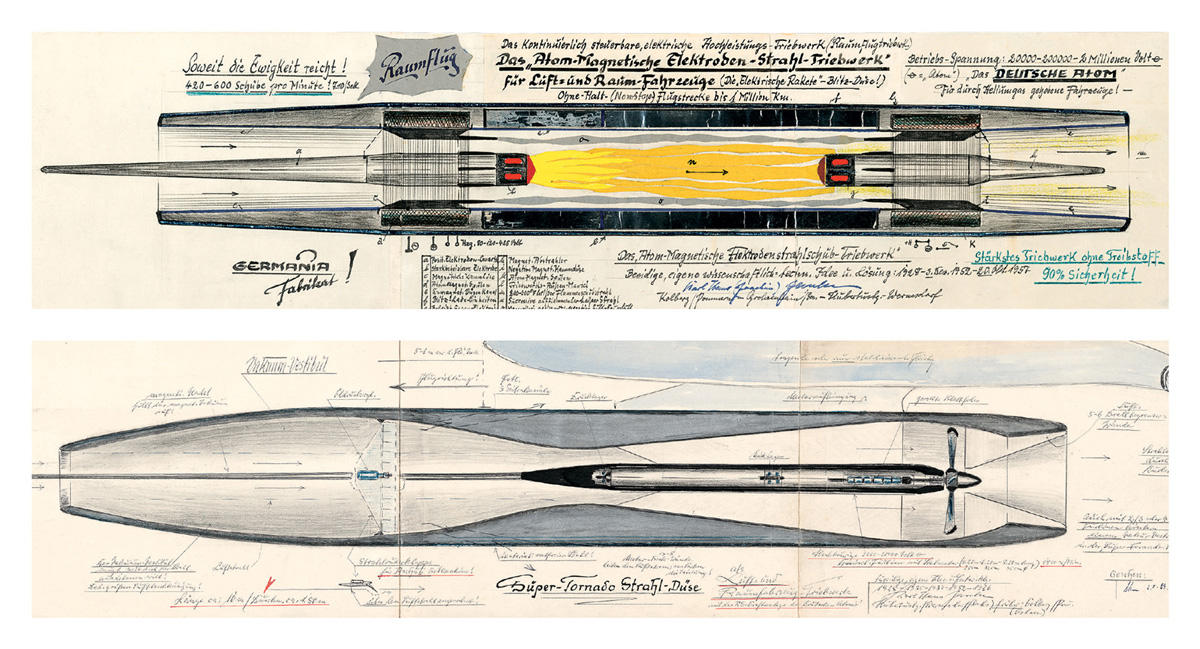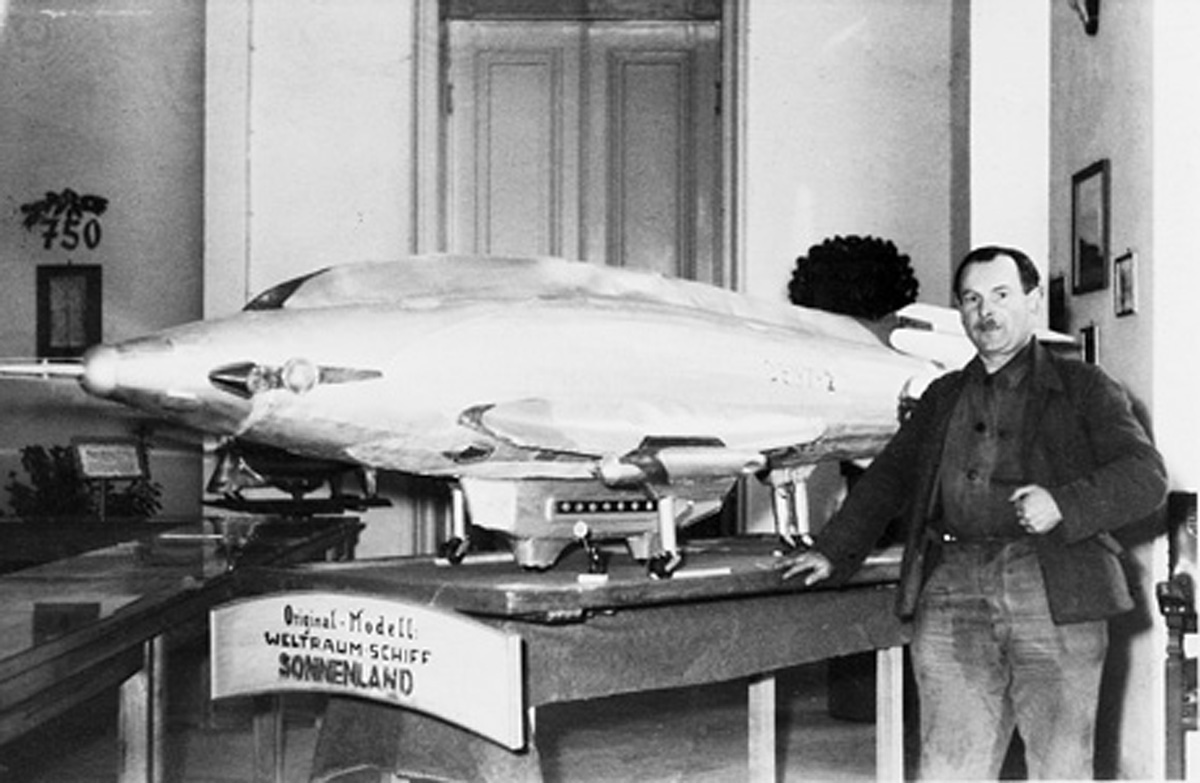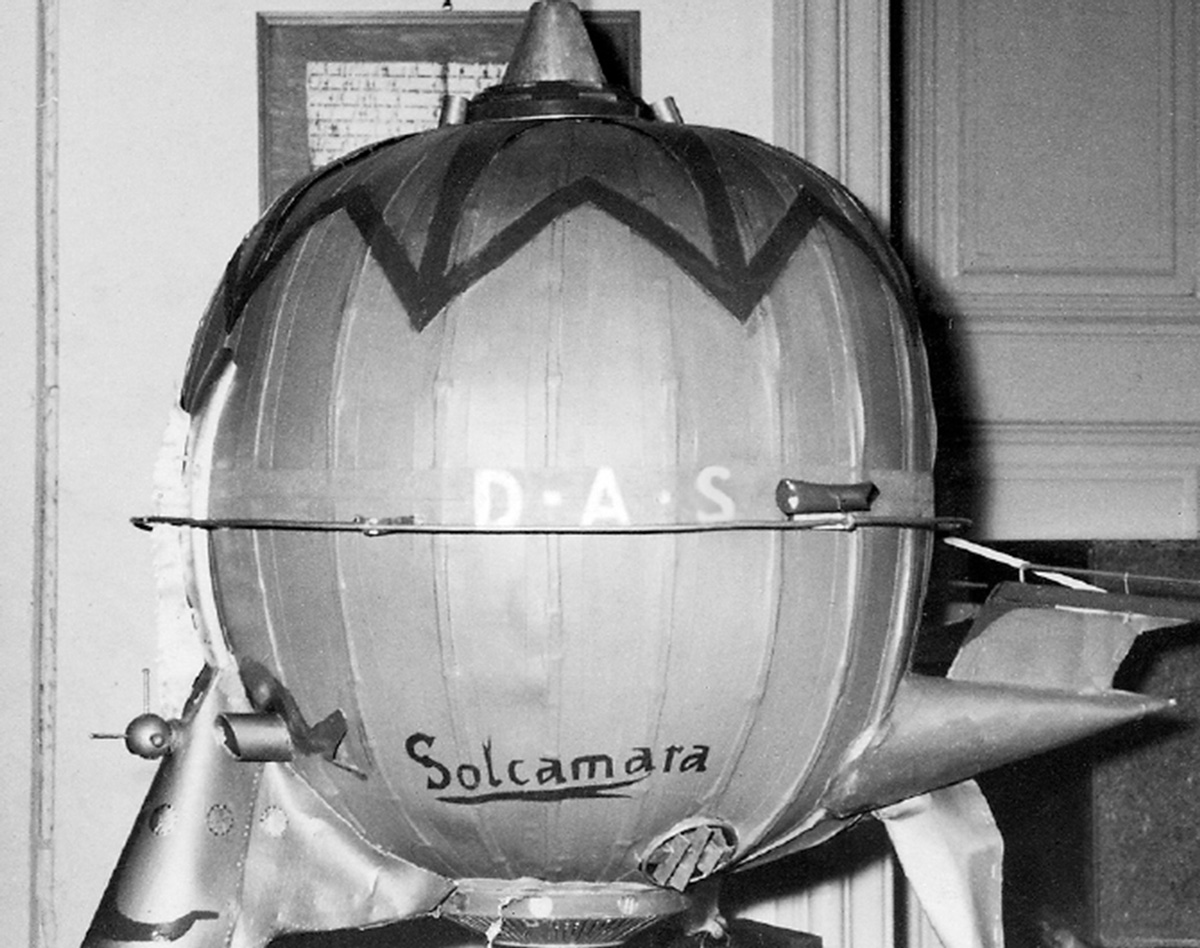The Imaginary Engineer
Karl Hans Janke’s flights of fancy
Kris Lee

During a slide lecture in 1970, Karl Hans Janke laid out for the audience his radical vision for producing infinite quantities of energy. Janke’s method, which did not require any fuel, relied on a new conception of the atom that could be used to harness the magnetic energy of the universe: “My atom, on the other hand, could be called a space-electron atom. … Since countless space-electrons are turned into energy in my power plant, it would be correct to call this a nuclear power plant. In contrast to the Soviet atom, I refer to my atom as the ‘German atom.’” As the lecture continued, Janke found occasion to lament the neglect from which his revolutionary scientific work had suffered: “It’s both strange and unfortunate that, over the twenty years in which I’ve lived in Hubertusburg, no government official has ever noticed or even shown interest in my work.” Janke’s very next sentence suggests a cause for this official neglect. “In sum, I would like to state that a spiral nebula, bar magnet, tree or bush, a swallow, animals, and human beings with head and motor organs, as well as clouds, stones, atomic systems, transmitters—even manifestations such as war and peace—should all be measured using a single form!” Janke was in fact delivering his lecture not to a learned society but to a group of hospital staff and fellow inmates at the Hubertusburg Federal Psychiatric Institution, located in the village of Wermsdorf in the Saxony region of East Germany. The lecturer had been a patient at the converted baroque castle since 11 August 1950, and he was to remain there for the rest of his life.
Born in Kolberg in Pomerania in 1909, in his teens Janke moved to Berlin. After graduating from high school, he studied at a dental college while also taking night courses at the Berlin University of Technology. In 1940, he was drafted into the military, but was dismissed in 1943 when the first symptoms of his disorder began to manifest themselves. He left Berlin and headed back to Saxony, where for a while he attempted to make a living as an inventor. In 1945, Janke’s father died, and his mother passed away three years later—events that may have contributed to Janke’s ultimate breakdown. In June 1949, he was arrested in the street for making public statements that were misconstrued as political agitation, and he was sent to the Clinic for Nervous Diseases in Arnsdorf. Diagnosed as a paranoid schizophrenic, he was transferred to Hubertusburg a year later.


By the time he died in 1988, Janke had produced more than 4,500 drawings and hundreds of models of various technological inventions, chief among which were fantastic flying machines rendered in exquisitely detailed technical sketches. Always fastidiously dressed in the style of a professional (he maintained an “office” at the hospital), Janke was somewhat condescending toward the nurses, orderlies, and fellow inmates, all of whom he considered ill-educated and of lower rank. He was very cordial, however, toward his doctors, whom he was forever trying to talk into forwarding his designs to scientists at industrial companies in East Germany. His desire to establish dialogue with the scientific community was tempered, however, by his fear that others would steal his ideas. He filed many patents, and his obsession with plagiarism also compelled him to mark many of his own drawings with the words, “I swear: own technological data.”

Janke went to great pains to emphasize that all his technological inventions and ideas were for the benefit of humanity and aimed toward propagating peace. In his final testament, he wrote, “I ask you to keep the images and albums with the numerous drawings and models that I created for you humans.” His archive was to be forgotten in an attic at the hospital for more than a decade until doctors at Hubertusburg rediscovered it in 2000.
Cabinet wishes to thank artist Carsten Nicolai whose exhibition of Janke’s work first brought his work to our and the author’s attention.
Website dedicated to Janke: www.karl-hans-janke.de/krankheituk.html [link defunct—Eds.].
Catalogue of the exhibition “Karl Hans (Joachim) Janke–ein Brevier” at Kunstlerhaus Bethanien, Berlin, 14 June–6 July 2003, available as a PDF at www.stilledesfliegens.de [link defunct—Eds.].
Catalogue of the exhibition “Karl-Hans Janke vs. Wernher von Braun,” at the Peenemünde Historical Technical Information Center, 23 June–4 November 2007, available as a PDF at www.peenemuende.de/index.php?id=58&L=2 [link defunct—Eds.].
Kris Lee is a longtime contributor to Cabinet and an adjunct professor of virtual media at Sequoia University in Oklahoma. Lee’s work was recently shown at the 2008 Montevideo:Video Festival in Uruguay.
Spotted an error? Email us at corrections at cabinetmagazine dot org.
If you’ve enjoyed the free articles that we offer on our site, please consider subscribing to our nonprofit magazine. You get twelve online issues and unlimited access to all our archives.